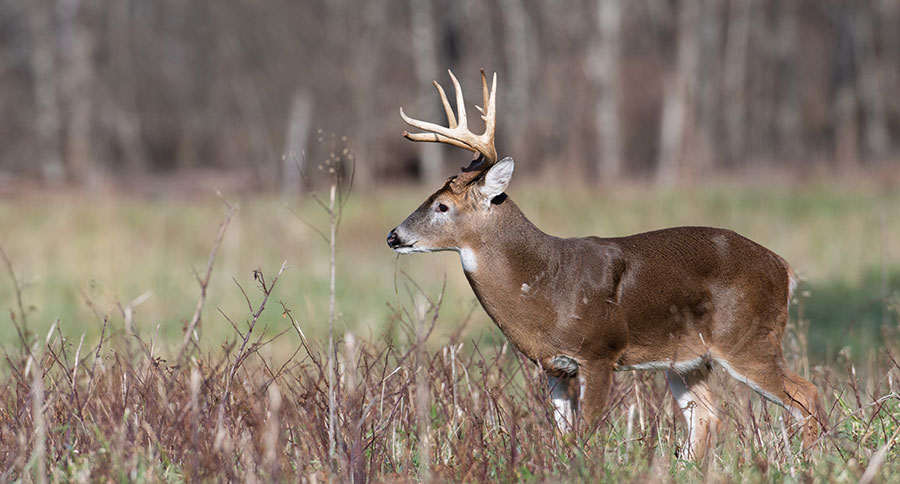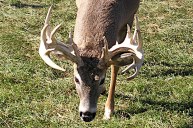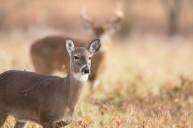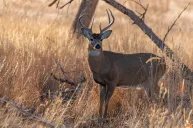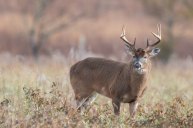The jury is still out, but an LSU researcher and a Pennsylvania sportsmen organization say they've found the real cause of chronic wasting disease.
The LSU AgCenter and the United Sportsmen of Pennsylvania recently unveiled some news that should ease some concerns over CWD, but other groups remain skeptical and a straightaway path to a cure for the 100% fatal disease is still undiscovered.
The new findings say that the disease is actually caused by a previously undiscovered species of bacteria called spiroplasma, instead of the assumed prions, the rogue proteins that affect the lymph nodes and nervous tissue.
The information was shared in a lengthy video that's made headlines across the country, stirring inappropriate "zombie deer" images in the minds of mainstream media producers, but giving conservationists, hunters, and wildlife experts reason for pause. Groups like the National Deer Alliance, various wildlife biologists, and even the Pennsylvania Game Commission have shared statements that cast doubt on the new findings.
"We now are set on a path to end this disease and pending nightmare in Pennsylvania, across America and throughout the world," Unified Sportsman of Pennsylvania ecologist John Eveland said in the video. The PGC, which recently unveiled its newest plans for battling the spread of CWD, says that refutes the decades of research that's proven prions as the infectious agent.
To get to the meat of the speech, fast forward to the 8 minute mark of the video.
The researcher who executed the experiments, LSU AgCenter's Frank Bastian, is the same neuropathology scientist who buzzed through the CWD news feeds more than a year ago with the announcement of his discovery of a way to grow the unique bacteria.
Well short of celebration, the reaction instead has been one of cautious questioning and respectful requests for more evidence.
The Clarion Ledger quoted Mississippi Department of Wildlife, Fisheries, and Parks Wildlife Bureau executive director Russ Walsh as saying the work needs to still be properly vetted and replicated.
"There's a lot of questions if it is indeed credible science," Walsh told the Clarion Ledger. "We're not discounting it, but we want to know more. Certainly, it could be plausible. There's still a lot of questions about prions and the prion theory. The scientific community will know more through research. This could be a large paradigm shift in the scientific community."
There's a bit of a 'Yeah, so now what?' feeling to the announcement, and though it doesn't appear to be a publicity stunt or deliberate hoax, the USP is seeking to raise over $250,000 to donate to LSU for CWD testing kits and vaccine developments. A press conference-style announcement couldn't possibly hurt those intentions.
Cases of CWD have been documented in 24 states and two provinces in Canada, in both captive deer and wild deer. The disease can spread through direct contact with urine, feces, saliva, blood, deer parts, and via live deer. It's affecting the number one game animal for North American hunters, with close to 10 million presumed to hit the woods for deer each season. Though yet to be found, a case of a human contracting CWD has never been so likely, with a recent statement from the Univ. of Minnesota's Center for Infectious Disease Research and Policy saying it's probable. No human has been known to have gotten sick from handling or eating CWD-infected game meat.
All the same, the Centers for Disease Control and Prevention was driven to recommend that hunters not "shoot, handle or eat meat from deer and elk that look sick or are acting strangely," as they could be CWD infected animals. They also suggest wearing gloves while field dressing, and that the only true way to avoid eating CWD-infected meat is to get it tested.
Mule deer, whitetail deer, moose, and elk have all been known to suffer from CWD. Wildlife management processes have had to adjust greatly, even in states where infected deer have yet to spread. CWD surveillance programs, unheard of until the last decade, are now soaking up huge portions of wildlife agency budgets. The well-being of a deer herd is always going to have an effect on a deer season, but when CWD cases enter the mix, it's a whole new ballgame.
If anything, the awareness and severity of CWD can only be increased by the announcement of the recent findings, and we're counting that as a positive. But until a proven cure and game plan can be established, the disease that's shaken the way we view, manage, and experience deer hunting in North America is still going to be a problem.
NEXT: OHIO DNR'S DIVISION OF WILDLIFE CLOSES OPERATION NORTH COAST, THE LARGEST CASE IN STATE HISTORY
WATCH
https://rumble.com/embed/u7gve.v3v4j9/
